Light imitates art
View Sequence overviewStudents will:
- recognise that light travels in a straight line, until it is interrupted.
- investigate to find out what happens when light makes contact with a reflective surface.
- identify the properties of a reflective surface.
- identify that the path of light can change direction under specific conditions.
Students will represent their understanding as they:
- contribute to class consensus discussion to explain the evidence collected.
- identify that light travels in a straight line, until it is interrupted by something, in this case a reflective surface.
- draw a ray diagram to show the path that light travels, and how this is altered after it reaches a reflective surface.
In this lesson, assessment is formative.
Feedback might focus on:
- the materials students select to attempt to change the direction of the light beam. Do they immediately identify that reflective surfaces will change the direction light is travelling?
- students’ ray diagrams. Are they able to represent the change in direction of light once it hits a reflective surface? Do their ray diagram include arrows to show the direction the light is travelling before and after it meets the reflective surface?
Whole class
Class science journal (digital or hard-copy)
Materials to add to a word wall or class glossary
Demonstration copy of the Shining light Resource sheet
Demonstration copy of the Around the corner Resource sheet
Spray bottle filled with water
Torch
2 x sheets of A4 paper, rolled into tubes. Ensure that one tube is slightly smaller in diameter so that the end of one can fit inside the other.
Each group
A small object
A pile of books or similar to create an obstruction
Torch
Access to materials students might test to see if they can change the direction of the beam of light. These materials must include reflective surfaces such as mirrors or foil and should also include clear plastic (hard and soft), white paper/cloth etc.
Safety note
Remind students never to shine the beam from a torch or other light source directly into their eyes. Light could damage the eye if shone directly or reflected from a very shiny surface into the eye. Encourage students to view light reflecting from a surface or object.
Each student
Individual science journal (digital or hard-copy)
Around the corner Resource sheet (or create their own)
Lesson
The Launch phase is designed to increase the science capital in a classroom by asking questions that elicit and explore students’ experiences. It uses local and global contexts and real-world phenomena that inspire students to recognise and explore the science behind objects, events and phenomena that occur in the material world. It encourages students to ask questions, investigate concepts, and engage with the Core Concepts that anchor each unit.
The Launch phase is divided into four routines that:
- ensure students experience the science for themselves and empathise with people who experience the problems science seeks to solve (Experience and empathise)
- anchor the teaching sequence with the key ideas and core science concepts (Anchor)
- elicit students’ prior understanding (Elicit)
- and connect with the students’ lives, languages and interests (Connect).
Re-orient
Review the activities and the ray diagrams created in the last lesson.
- Why could we not see the object in the box originally?
- There was no light to reflect from the object to our eyes.
- What did we need to do so that we could see the object in the box?
- Let some light into the box to shine on the object and reflect to our eyes.
- What was the best position for the torch to be in for us to be able to see the object clearly?
- Angled toward the object we were trying to see, so it could shine off it.
- What helps us to see?
- What are ray diagrams?
The Inquire phase allows students to cycle progressively and with increasing complexity through the key science ideas related to the core concepts. Each Inquire cycle is divided into three teaching and learning routines that allow students to systematically build their knowledge and skills in science and incorporate this into their current understanding of the world.
When designing a teaching sequence, it is important to consider the knowledge and skills that students will need in the final Act phase. Consider what the students already know and identify the steps that need to be taken to reach the level required. How could you facilitate students’ understanding at each step? What investigations could be designed to build the skills at each step?
Read more about using the LIA FrameworkIdentifying and constructing questions is the creative driver of the inquiry process. It allows students to explore what they know and how they know it. During the Inquire phase of the LIA Framework, the Question routine allows for past activities to be reviewed and to set the scene for the investigation that students will undertake. The use of effective questioning techniques can influence students’ view and interpretation of upcoming content, open them to exploration and link to their current interests and science capital.
When designing a teaching sequence, it is important to spend some time considering the mindset of students at the start of each Inquire phase. What do you want students to be thinking about, what do they already know and what is the best way for them to approach the task? What might tap into their curiosity?
Read more about using the LIA FrameworkWhere the light shines
Point a torch at a specific spot in the classroom and ask students to predict where the light from the torch will shine once the torch is turned on. Repeat by pointing the torch in another direction.
Using the Shining Light Resource sheet, display the images showing sunlight shining in straight lines, for example through mist in the early morning or through trees in a rainforest. Ask students to describe how the light is depicted.
Pose the question: How can we show that the light is travelling in a straight line?
The Inquire phase allows students to cycle progressively and with increasing complexity through the key science ideas related to the core concepts. Each Inquire cycle is divided into three teaching and learning routines that allow students to systematically build their knowledge and skills in science and incorporate this into their current understanding of the world.
When designing a teaching sequence, it is important to consider the knowledge and skills that students will need in the final Act phase. Consider what the students already know and identify the steps that need to be taken to reach the level required. How could you facilitate students’ understanding at each step? What investigations could be designed to build the skills at each step?
Read more about using the LIA FrameworkThe Investigate routine provides students with an opportunity to explore the key ideas of science, to plan and conduct an investigation, and to gather and record data. The investigations are designed to systematically develop content knowledge and skills through increasingly complex processes of structured inquiry, guided inquiry and open inquiry approaches. Students are encouraged to process data to identify trends and patterns and link them to the real-world context of the teaching sequence.
When designing a teaching sequence, consider the diagnostic assessment (Launch phase) that identified the alternative conceptions that students held. Are there activities that challenge these ideas and provide openings for discussion? What content knowledge and skills do students need to be able to complete the final (Act phase) task? How could you systematically build these through the investigation routines? Are there opportunities to build students’ understanding and skills in the science inquiry processes through the successive investigations?
Read more about using the LIA FrameworkFollowing an investigation, the Integrate routine provides time and space for data to be evaluated and insights to be synthesized. It reveals new insights, consolidates and refines representations, generalises context and broadens students’ perspectives. It allows student thinking to become visible and opens formative feedback opportunities. It may also lead to further questions being asked, allowing the Inquire phase to start again.
When designing a teaching sequence, consider the diagnostic assessment that was undertaken during the Launch phase. Consider if alternative conceptions could be used as a jumping off point to discussions. How could students represent their learning in a way that would support formative feedback opportunities? Could small summative assessment occur at different stages in the teaching sequence?
Read more about using the LIA FrameworkSee the rays
Students predict what they think they will see when water is sprayed from a spray bottle into the beam of light being shone from a torch.
With the help of students, darken the room and demonstrate what happens. Discuss.
- What did you see in the light of the torch?
- You can see the water droplets—they shine in the beam of the torch and you can see the beam itself more easily.
- What does the shape of the beam of light look like? How big is it? Does it stay the same size?
- The beam starts out the width of the torch but gets wider and ‘spreads out’ the further away from the torch it gets.
- Can you see where the beam of light ends?
- You can tell where the beam ends because you can see water droplets falling, but they doesn’t shine/sparkle when they're not in the beam of light from the torch.
- If you had to draw the beam of light coming from the torch, what would you draw?
- Where is the light being transferred from and to?
You might like to ask students to represent this independently. Otherwise, draw a single, agreed-upon representation in the class science journal.
Next, show students a paper tube. Ask them to predict what they think they will observe when a torch is placed at one end of the tube and turned on. Use the P and R sections of a PROE table (Predict, Reason, Observe, Explain) technique to record student predictions and reasoning.
Complete the demonstration, discuss if their predictions were correct, and complete the O and E sections of the PROE.
Insert the end of a second paper tube into the first, taking care to make sure it is straight, to create one long tube. Repeat the prediction and demonstration process described above. Compare what happened with one tube, and when a second one was attached: you should still see light shining out of the end of the tube, the tube will simply be longer.
Finally, manipulate the second tube so that it becomes crooked, and again repeat the prediction/demonstration/comparison process. You will not be able to see light shining from the end of the tube this time, as the light rays will be blocked by the bend in the tube.
- Could we see the light shining through both tubes in the final demonstration?
- No,
- Why not?
- In the final demonstration the second tube was crooked/not straight, so the light couldn’t get through to shine out of the end of the tube.
- Why couldn’t the light get through?
- It was blocked by the bend in the tube.
- What happens to the light?
- It can’t shine straight through anymore, because it is blocked by the paper/cardboard. The light bounces off the paper and back towards the torch.
Jointly construct an explanation to answer the question: How can we show that the light is travelling in a straight line? For example, “When we shine a light through a straight tube, the light can be seen travelling through the tube and shining out the other side. When we add a bend to the tube, the light cannot be seen coming out the other side. This is because the light is travelling in a straight line, it cannot ‘bend’ around the corner/curve created in the bent tube."
Predict, Reason, Observe, Explain (PROE)
How does a PROE support deep thinking and develop argumentation skills?
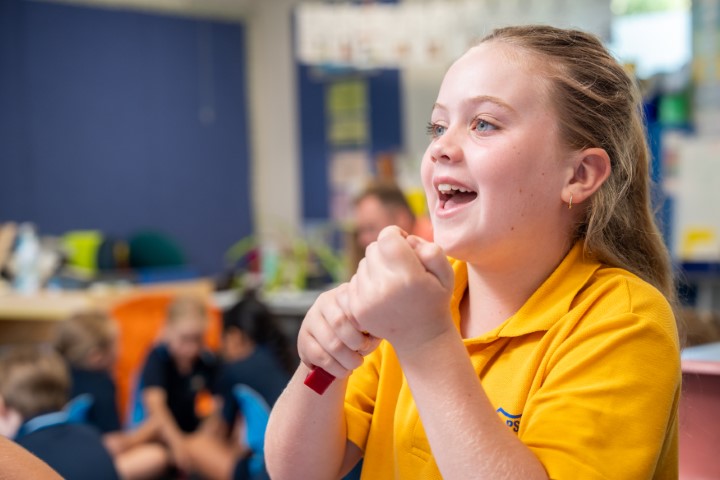
PROE is a tool to engage students in the investigative process and support deep thinking. It affords students’ experience with developing argumentation skills through science inquiry, and supports you, the teacher, to monitor their thinking in order to guide the inquiry.
By Predicting, and giving Reasons for these predictions, students are drawing on the evidence they have collected through past experiences.
When they Observe what is happening during an investigation they make comparisons to what they thought, either confirming or challenging their ideas and the evidence they drew on to form them.
If their thinking is confirmed, then they are able to add new evidence to understanding of the phenomena as they further Explain it.
If their thinking has been challenged, then they will undertake a thought process to compare their past experiences, asking questions and considering their understanding of the concept. They might discuss these new ideas with other students, or undertake further investigation to confirm it.
PROE is a tool to engage students in the investigative process and support deep thinking. It affords students’ experience with developing argumentation skills through science inquiry, and supports you, the teacher, to monitor their thinking in order to guide the inquiry.
By Predicting, and giving Reasons for these predictions, students are drawing on the evidence they have collected through past experiences.
When they Observe what is happening during an investigation they make comparisons to what they thought, either confirming or challenging their ideas and the evidence they drew on to form them.
If their thinking is confirmed, then they are able to add new evidence to understanding of the phenomena as they further Explain it.
If their thinking has been challenged, then they will undertake a thought process to compare their past experiences, asking questions and considering their understanding of the concept. They might discuss these new ideas with other students, or undertake further investigation to confirm it.
The Inquire phase allows students to cycle progressively and with increasing complexity through the key science ideas related to the core concepts. Each Inquire cycle is divided into three teaching and learning routines that allow students to systematically build their knowledge and skills in science and incorporate this into their current understanding of the world.
When designing a teaching sequence, it is important to consider the knowledge and skills that students will need in the final Act phase. Consider what the students already know and identify the steps that need to be taken to reach the level required. How could you facilitate students’ understanding at each step? What investigations could be designed to build the skills at each step?
Read more about using the LIA FrameworkIdentifying and constructing questions is the creative driver of the inquiry process. It allows students to explore what they know and how they know it. During the Inquire phase of the LIA Framework, the Question routine allows for past activities to be reviewed and to set the scene for the investigation that students will undertake. The use of effective questioning techniques can influence students’ view and interpretation of upcoming content, open them to exploration and link to their current interests and science capital.
When designing a teaching sequence, it is important to spend some time considering the mindset of students at the start of each Inquire phase. What do you want students to be thinking about, what do they already know and what is the best way for them to approach the task? What might tap into their curiosity?
Read more about using the LIA FrameworkCan it be bent?
Pose the question: Can we change the direction the beam of light is travelling? How might we do this?
You can relate this to the demonstration by asking students if there was something they could do to the bent tube to make sure the light still shone out the other end.
The Inquire phase allows students to cycle progressively and with increasing complexity through the key science ideas related to the core concepts. Each Inquire cycle is divided into three teaching and learning routines that allow students to systematically build their knowledge and skills in science and incorporate this into their current understanding of the world.
When designing a teaching sequence, it is important to consider the knowledge and skills that students will need in the final Act phase. Consider what the students already know and identify the steps that need to be taken to reach the level required. How could you facilitate students’ understanding at each step? What investigations could be designed to build the skills at each step?
Read more about using the LIA FrameworkThe Investigate routine provides students with an opportunity to explore the key ideas of science, to plan and conduct an investigation, and to gather and record data. The investigations are designed to systematically develop content knowledge and skills through increasingly complex processes of structured inquiry, guided inquiry and open inquiry approaches. Students are encouraged to process data to identify trends and patterns and link them to the real-world context of the teaching sequence.
When designing a teaching sequence, consider the diagnostic assessment (Launch phase) that identified the alternative conceptions that students held. Are there activities that challenge these ideas and provide openings for discussion? What content knowledge and skills do students need to be able to complete the final (Act phase) task? How could you systematically build these through the investigation routines? Are there opportunities to build students’ understanding and skills in the science inquiry processes through the successive investigations?
Read more about using the LIA FrameworkAround the corner
Using Around the corner Resource sheet, students will work in collaborative teams to investigate how they might change the direction of a beam of light.
Show students a diagram or set-up of the investigation, showing a pile of books at the centre, a torch placed near one corner of the pile, and an object near the diagonally opposite corner:
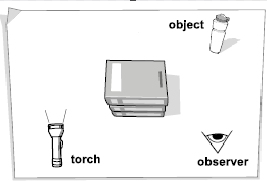
Challenge students to get the beam of light around the corner to shine on the object, so that the observer can see the beam of light clearly. Students should set up the investigation on a surface they can draw on, such as a large sheet of paper, or a table (where whiteboard markers can be used and erased).
Turn on the torch and discuss the difference between the ambient light hitting the object, and having the beam of light directed at the object. Observers are aiming to see the direct beam of light hitting the object.
You might allow students to wrestle with this task for a short period before providing prompts. When a group's discussion has become un-productive (i.e., students are no longer discussing ideas and possibilities and have become frustrated) consider providing enabling prompts such as pointing them in the direction of a resource table where there are reflective surfaces, among other objects such as white and coloured paper to choose from.
Alternatively, introduce the resource table immediately.
Once they have managed to get the beam of light around the corner, students trace the beam of light onto their drawing surface, following it from the torch to the mirror, and then from the mirror to the object, labelling the location of the observer, mirror, object, obstruction, and light ray. This, in effect, creates a ray diagram that represents what they experienced during the investigation. They will return to this diagram after the integrate discussion.
Alternative conceptions—how light moves
What alternative conceptions might students hold about light transfer and how does this investigation address them?
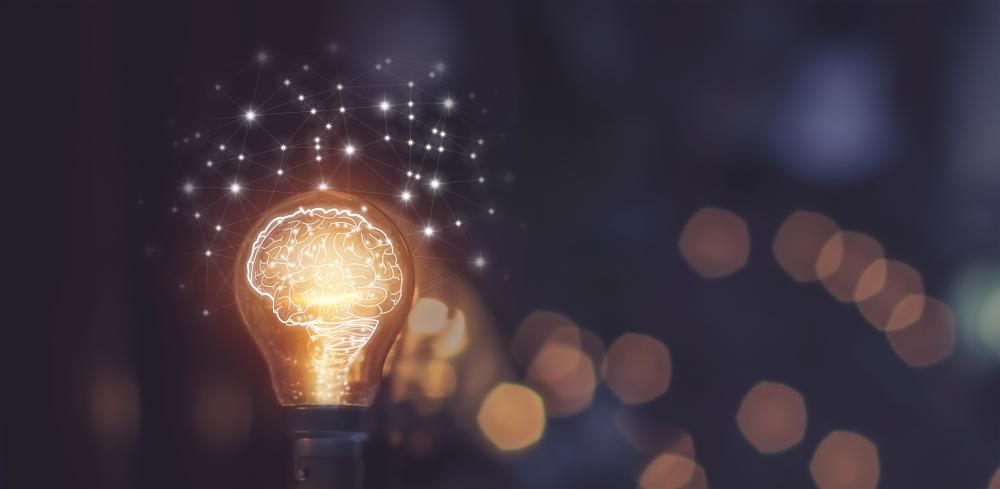
Light radiates from its source in straight lines until it is interrupted. If it encounters matter, it is reflected, transmitted (let through) or absorbed (transformed into heat energy).
When light encounters opaque objects:
- if the surface of the object is light in colour and/or shiny and smooth, then less light is absorbed by the surface and more light is reflected in a more ordered way.
- if the surface of the object is dark in colour and/or dull or irregular, more light is absorbed by the surface and less light is reflected in a more disordered way.
All objects reflect some amount of light. Light might appear to travel on a curved path, for example, a mirage.
We can use the characteristics of light to manipulate it. Reflective surfaces can be used to direct light where we want it to go. A mirror is a very good reflective surface. It reflects light so well that we can see an image of an object placed in front of it. Light always reflects off a smooth surface at the same angle it strikes. Other surfaces will scatter the light in all directions because, at the microscopic level, the surface is uneven.
Students may not know that a beam of light can be redirected, or be able to articulate the specific conditions required in order to make that happen (a reflective surface). This activity addresses this, demonstrating clearly that light 'bounces off' reflective surfaces, changing the direction in which it was traveling.
Having a variety of materials for students to test is ideal, as it will help them to recognise that some surfaces are more reflective (mirrors vs clear shiny plastic) and sets them up for further investigations into opaque surfaces which absorb light and create shadows.
Light radiates from its source in straight lines until it is interrupted. If it encounters matter, it is reflected, transmitted (let through) or absorbed (transformed into heat energy).
When light encounters opaque objects:
- if the surface of the object is light in colour and/or shiny and smooth, then less light is absorbed by the surface and more light is reflected in a more ordered way.
- if the surface of the object is dark in colour and/or dull or irregular, more light is absorbed by the surface and less light is reflected in a more disordered way.
All objects reflect some amount of light. Light might appear to travel on a curved path, for example, a mirage.
We can use the characteristics of light to manipulate it. Reflective surfaces can be used to direct light where we want it to go. A mirror is a very good reflective surface. It reflects light so well that we can see an image of an object placed in front of it. Light always reflects off a smooth surface at the same angle it strikes. Other surfaces will scatter the light in all directions because, at the microscopic level, the surface is uneven.
Students may not know that a beam of light can be redirected, or be able to articulate the specific conditions required in order to make that happen (a reflective surface). This activity addresses this, demonstrating clearly that light 'bounces off' reflective surfaces, changing the direction in which it was traveling.
Having a variety of materials for students to test is ideal, as it will help them to recognise that some surfaces are more reflective (mirrors vs clear shiny plastic) and sets them up for further investigations into opaque surfaces which absorb light and create shadows.
The Inquire phase allows students to cycle progressively and with increasing complexity through the key science ideas related to the core concepts. Each Inquire cycle is divided into three teaching and learning routines that allow students to systematically build their knowledge and skills in science and incorporate this into their current understanding of the world.
When designing a teaching sequence, it is important to consider the knowledge and skills that students will need in the final Act phase. Consider what the students already know and identify the steps that need to be taken to reach the level required. How could you facilitate students’ understanding at each step? What investigations could be designed to build the skills at each step?
Read more about using the LIA FrameworkFollowing an investigation, the Integrate routine provides time and space for data to be evaluated and insights to be synthesized. It reveals new insights, consolidates and refines representations, generalises context and broadens students’ perspectives. It allows student thinking to become visible and opens formative feedback opportunities. It may also lead to further questions being asked, allowing the Inquire phase to start again.
When designing a teaching sequence, consider the diagnostic assessment that was undertaken during the Launch phase. Consider if alternative conceptions could be used as a jumping off point to discussions. How could students represent their learning in a way that would support formative feedback opportunities? Could small summative assessment occur at different stages in the teaching sequence?
Read more about using the LIA FrameworkReflections
Share students’ methods for getting the light to shine around the corner onto the object. Through this discussion determine which surfaces made it easiest to change the direction of the beam of light, and what these surfaces all have in common: the mirrors, foil and, less so, the clear plastic, which are all shiny and smooth.
If students haven’t offered it themselves, introduce the term ‘reflective’ as a way to describe these properties.
Discuss that reflective surfaces allow light to ‘bounce off’ them easily. They are typically smooth and shiny, and we can see ‘reflections’ in them—although sometimes we have to look at them at just the right angle for this to happen.
Discuss the reflective surfaces the students used in the investigation and how easily you can see a reflection in them. For example, a mirror is the most reflective, and you can see your reflection in it easily. The clear plastic needs to be held a certain way for you to see reflections in it. You can see your reflection in the shiny side of the foil, but it is not clear and often looks distorted. The dull side of the foil is less clear, but you can see colours reflected back at you. The reflections are sometimes clearer the closer you get to the foil (you can demonstrate this with your hand).
List other surfaces that might have reflective properties, such as glass and water.
Students return to the ray diagram they created earlier, where they traced the beam of light from the torch to the mirror and then to the object. They measure the angles created by the beam of light coming into the mirror, and the reflected ray coming from the mirror to the object. Compare these two angles and discuss what students notice about them—the two angles should be equivalent.
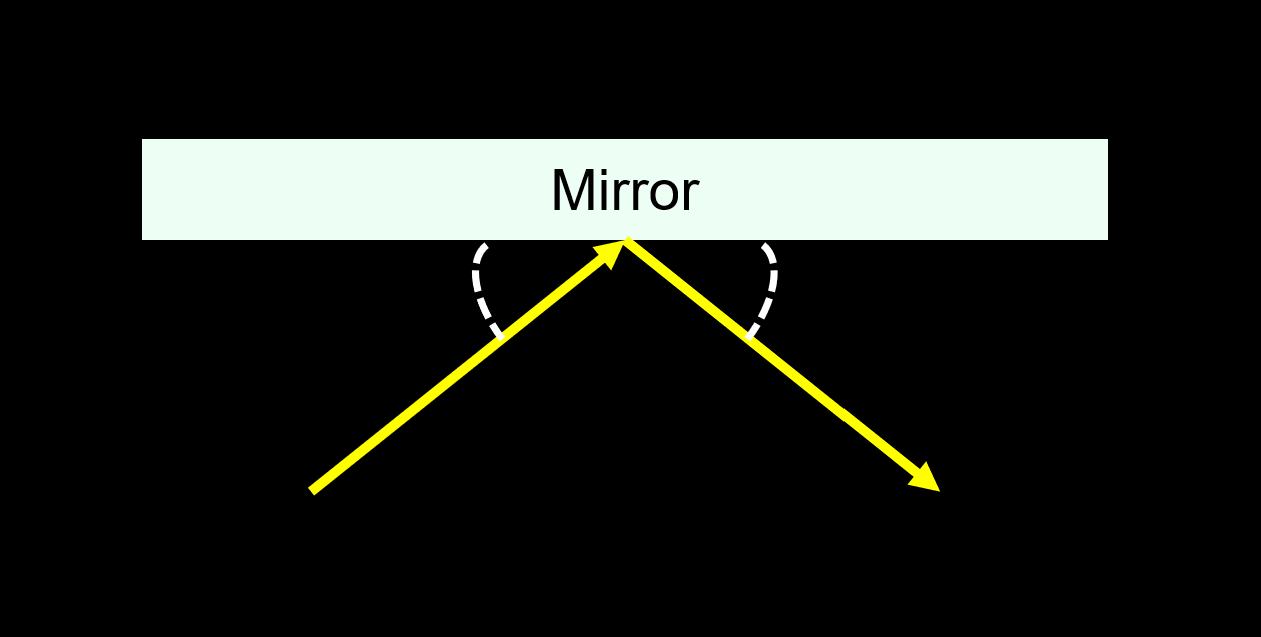
Optional: Explore how mirrors work. See the below embedded professional learning on Mirrors for suggestions.
Students draw a ray diagram in their science journals to show the beam of light travelling from the torch, reaching the mirror, reflecting off the mirror and changing directions towards the object. They should include any information on angles if they were measured.
Reflect on the lesson
You might:
- add new words and images to the word wall or glossary.
- add to the W and H sections of the TWLH chart.
- discuss how the learning from this lesson will be relevant to building light sculptures at the end of the sequence:
- It will help students to determine the path the light will take from its source.
- It will help students determine how to change the path of the light to make it go in a direction of their choosing.
Teacher talk: building consensus
How might you support your class to build a shared understanding of scientific concepts?
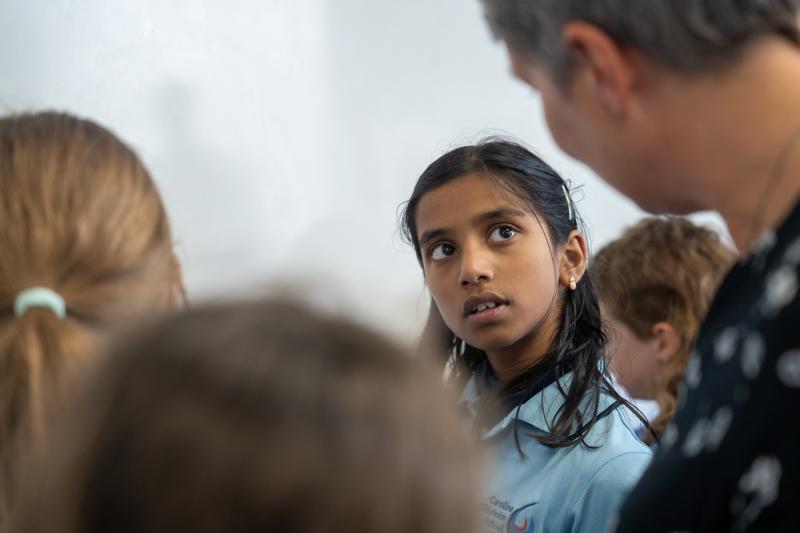
The discourse moves a teacher makes are crucial to ensure that students’ ideas are canvassed and progressively shaped to build communal understanding.
In this case, some of the ways you might support students to reach consensus include:
- probing and acknowledging new ideas.
- marking interesting, valuable or relevant ideas by repeating them or recording them in the class science journal.
- clarifying a student’s ideas by asking them to re-voice or re-word what they have said. You should allow students an opportunity to do this before you yourself re-cast or paraphrase the idea using the correct terminology.
- Canvassing other students’ opinions in relation to ideas by asking questions such as ‘who agrees…?” or “Who else has evidence to support or contradict …?”
The discourse moves a teacher makes are crucial to ensure that students’ ideas are canvassed and progressively shaped to build communal understanding.
In this case, some of the ways you might support students to reach consensus include:
- probing and acknowledging new ideas.
- marking interesting, valuable or relevant ideas by repeating them or recording them in the class science journal.
- clarifying a student’s ideas by asking them to re-voice or re-word what they have said. You should allow students an opportunity to do this before you yourself re-cast or paraphrase the idea using the correct terminology.
- Canvassing other students’ opinions in relation to ideas by asking questions such as ‘who agrees…?” or “Who else has evidence to support or contradict …?”
Mirrors
How might you further explore how mirrors work?
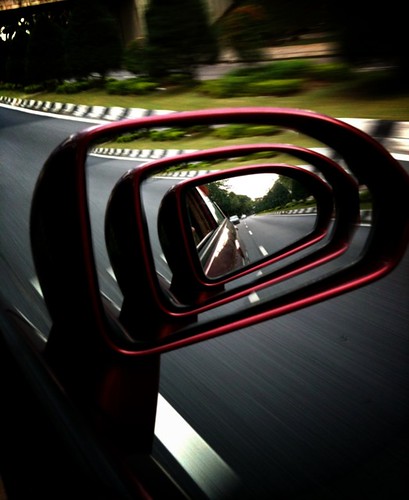
Reflective surfaces can be used to direct light where we want it to go. A mirror is a very good reflective surface. Light always reflects off a smooth surface at the same angle it strikes. Other surfaces will scatter the light in all directions because, at the microscopic level, the surface is uneven.
Reflections of individual objects are reversed in a mirror—if you look at yourself in a mirror and raise your right hand, the image in the mirror appears to raise their left hand.
Explore how mirrors work with the following activities.
- Students attempt to read a message, written by a partner, from a reflection in a mirror (not reading from the original message). Discuss what students can see (the words are backward) and why that is (reflections are an opposite image, so objects appear reversed in them.) Discuss how they might get the message to appear ‘the right way’ for their partner (by writing the words backwards) and where this might be used in real life. For example, when you look directly at the front of an ambulance, the word ‘ambulance’ appears reversed. This is because when they are coming up from behind drivers on the road in an emergency, the word will appear the right way in the drivers rear-vision mirror, helping them to understand what is happening more quickly, so they can move out of the way during emergencies.
- Students demonstrate how a mirror works by standing face-to-face with a partner and 'mirroring' their movements. One student acts as a mirror by copying the arm or face movements of their partner. Discuss how when the right hand of the partner moves, the left hand of the ‘mirror student’ will move. Discuss how both students still have their toes facing toward each other. Compare the ‘mirror movements’ with how things move in a real mirror.
- Discuss the similarities between the two angles measured—the angle between the incoming light and the mirror, and the outgoing light and the mirror. Ask students if these two angles will always be the same. Generate a PROE (predict, reason, observe, explain) to test students' ideas.
Reflective surfaces can be used to direct light where we want it to go. A mirror is a very good reflective surface. Light always reflects off a smooth surface at the same angle it strikes. Other surfaces will scatter the light in all directions because, at the microscopic level, the surface is uneven.
Reflections of individual objects are reversed in a mirror—if you look at yourself in a mirror and raise your right hand, the image in the mirror appears to raise their left hand.
Explore how mirrors work with the following activities.
- Students attempt to read a message, written by a partner, from a reflection in a mirror (not reading from the original message). Discuss what students can see (the words are backward) and why that is (reflections are an opposite image, so objects appear reversed in them.) Discuss how they might get the message to appear ‘the right way’ for their partner (by writing the words backwards) and where this might be used in real life. For example, when you look directly at the front of an ambulance, the word ‘ambulance’ appears reversed. This is because when they are coming up from behind drivers on the road in an emergency, the word will appear the right way in the drivers rear-vision mirror, helping them to understand what is happening more quickly, so they can move out of the way during emergencies.
- Students demonstrate how a mirror works by standing face-to-face with a partner and 'mirroring' their movements. One student acts as a mirror by copying the arm or face movements of their partner. Discuss how when the right hand of the partner moves, the left hand of the ‘mirror student’ will move. Discuss how both students still have their toes facing toward each other. Compare the ‘mirror movements’ with how things move in a real mirror.
- Discuss the similarities between the two angles measured—the angle between the incoming light and the mirror, and the outgoing light and the mirror. Ask students if these two angles will always be the same. Generate a PROE (predict, reason, observe, explain) to test students' ideas.